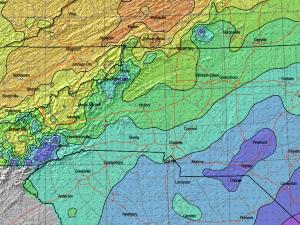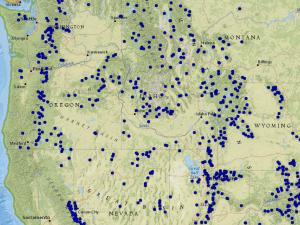Stressors and impacts
Colorado’s snow is more than just a draw for skiers and the backdrop to idyllic mountain photos: the state’s winter snowpack serves as one of its leading sources of drinking water. With Colorado projected to warm by at least 2.5 degrees Fahrenheit by mid-century, changes in both the amount of snowpack and the timing of snowmelt could raise big concerns for the state’s drinking water suppliers. “Snow is a precious resource.... The majority of our water comes from snow,” said Laurna Kaatz, the climate policy analyst for Denver Water—Colorado’s oldest and largest water utility. Changes from increased temperatures stand to affect streams, rivers, and reservoir operations, and increase the water needs of crops, landscaping, and natural vegetation in the semi-arid state.
Staff at Denver Water wanted to better understand changing climate conditions and how they stood to affect the 1.3 million Colorado residents the utility serves. In order to prepare for the future and promote its need for better science and modeling to help with uncertainty planning, the utility convened a group of climate and hydrology scientists. “When it comes to climate change, you’re really talking about planning for uncertainty. And planning for uncertainty is something a water utility does really well,” said Kaatz.
Planning for uncertainty
One of the challenges for a water utility planning for climate change is that climate model output usually describes projected temperature and precipitation values: translating these into the streamflow information water utilities usually use requires additional expertise and customized tools. To address these needs, Denver Water initiated the Joint Front Range Climate Change Vulnerability Study. The first thing the research team did was explore how changes to temperature and precipitation could impact the natural water system. Denver Water then took that information and figured out the implications of warming to their own supply.
“As it turns out, we are extremely sensitive to warming,” said Kaatz. In the models, a simple 5 degree Fahrenheit increase in temperature resulted in a 20 percent loss of supply. That means that without taking into account increasing demand from population growth, extreme precipitation events, or other factors that can impact water systems, and assuming variability does not change significantly in the future, Denver Water could lose one-fifth of its supply due to warming alone. “Colorado has warmed 2 degrees Fahrenheit in the last couple of decades and we have already started to see some impacts such as streamflows coming earlier,” said Kaatz. “Unfortunately climate projections for our watersheds don’t agree on how precipitation will change in the future, but what we anticipate to see from continued warming could be much more extreme.”
“[Understanding] climate is important to Denver Water because it helps us prepare for the long-term,” said Kaatz. “And as the climate changes, we want to ensure that we understand how it could change and what that means to our supply, and what that means to people who use water, so that we can do our job and provide safe water.”
Collaboration is key
Because using climate data is a relatively new phenomenon for water utilities, Denver Water found that the key to its success lay in collaboration with both the scientific community and other utilities around the country. “Collaboration is a key part in climate adaptation,” said Kaatz. Denver Water helped found the Water Utility Climate Alliance—a group of 10 national water utilities that serves 43 million people—whose goals are to develop a solid understanding of climate science and adaptation, and then work with scientists to address their needs. “Not very many people are looking at what climate change means to water resources, so we like to be able to brainstorm and hear feedback about how practices are working for other utilities engaged in climate research and climate adaptation,” said Kaatz.
A model for success
By collaborating with scientists and other professionals, these water utility companies are taking action to harness the latest science in order to improve their preparedness in the face of a changing climate. “We need to build resiliency in our system to ensure that our customers have a safe, clean, reliable drinking source. Not only for us, for our future, but for many generations to come,” said Kaatz.









